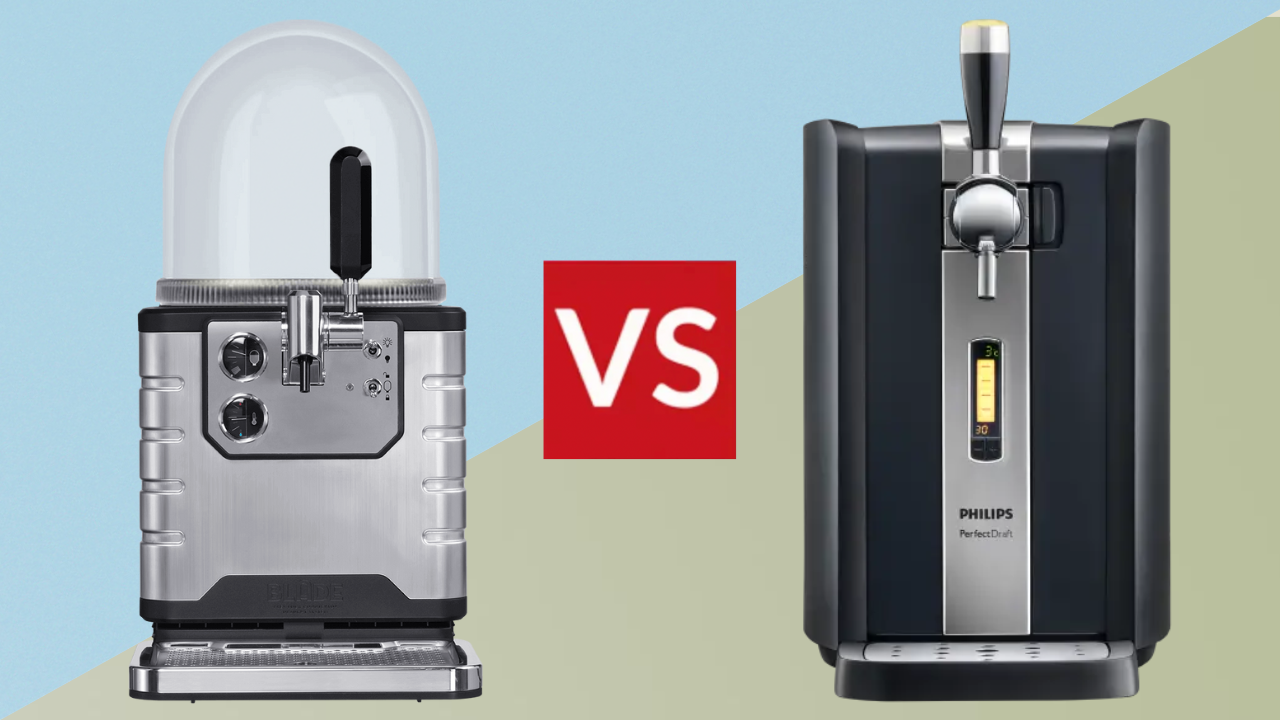
Okay, picture this. The sun is shining and your best pals are over, and all of you are soaking up the rays in the garden. One of the best barbecues is cooking away and someone's put a really good playlist on. It literally couldn't be more perfect, could it?
The aforementioned scenario is one of my favourite ways to enjoy the summer months, and until a recent discovery, I was under the impression that it couldn't be matched. Wondering what the discovery is? Let me tell you about beer keg machines.
A beer keg machine, sometimes known as a kegerator, is an appliance that chills and dispenses draft beer from a keg to a tap. It basically brings the pub to your own home, and since the doomed days of lockdowns and viruses, they've become incredibly popular.
I recently reviewed the Philips PerfectDraft and was more than impressed with its results. That meant when the opportunity arose to try out the Beerwulf Blade, I knew I couldn't say no. I soon set to work at comparing the two beer keg machines, and below you'll find the answer to which one is best.
Philips PerfectDraft vs Beerwulf Blade: price and availability
Before we jump into anything too complicated, let's start with the figures. There's a significant price difference between the Philips PerfectDraft and Beerwulf Blade, with the Blade coming in almost £170 more expensive than the PerfectDraft. However, there's a few reasons why this feels justified, and we'll get to those later on.
Buy the Philips PerfectDraft for £299.99
Buy the Beerwulf Blade for £469.00
There are sustainable elements to both brands. PerfectDraft's free empty keg return scheme allows buyers to get £5 of credit for each empty keg returned, something that could add up after a few purchases. Blade alternatively sells refurbished machines for a significantly lower price, allowing buyers to try out the world of home draught systems without fully committing to a new machine.
Both brands have a wide variety of kegs on offer, but I'd say Blade's offering is slightly more premium. PerfectDraft sticks to the classics, including Stella Artois, Budweiser, Becks etc. However, I probably prefer the brands you can get with Blade, such as Moretti, Tiger and Heineken. All of the kegs are priced fairly, and you can often find reduced deals on either website or Amazon.
Another main difference is that the PerfectDraft kegs are six litres, whereas the Blade kegs are eight litres. This is a difference of about three and a half pints, so if you're looking for that bigger capacity, Blade is the best option for you.
Philips PerfectDraft vs Beerwulf Blade: set up
Both machines have a similar set up process, and I found it easy to get both of them going. They both come with a tap handle that has to be attached, and a drip tray that has to be slotted in. One thing I found reassuring about the PerfectDraft was that the instructions are printed on the inside of the machine, meaning it's not too much of an issue if you lose the paper manual.
Once plugged in, inserting the kegs is also a very similar process on both machines. They require the user to connect the keg tube (this is built in on the Blade kegs and separate on the PerfectDraft ones) to the tap head, and both sound a loud 'click' when this is complete.
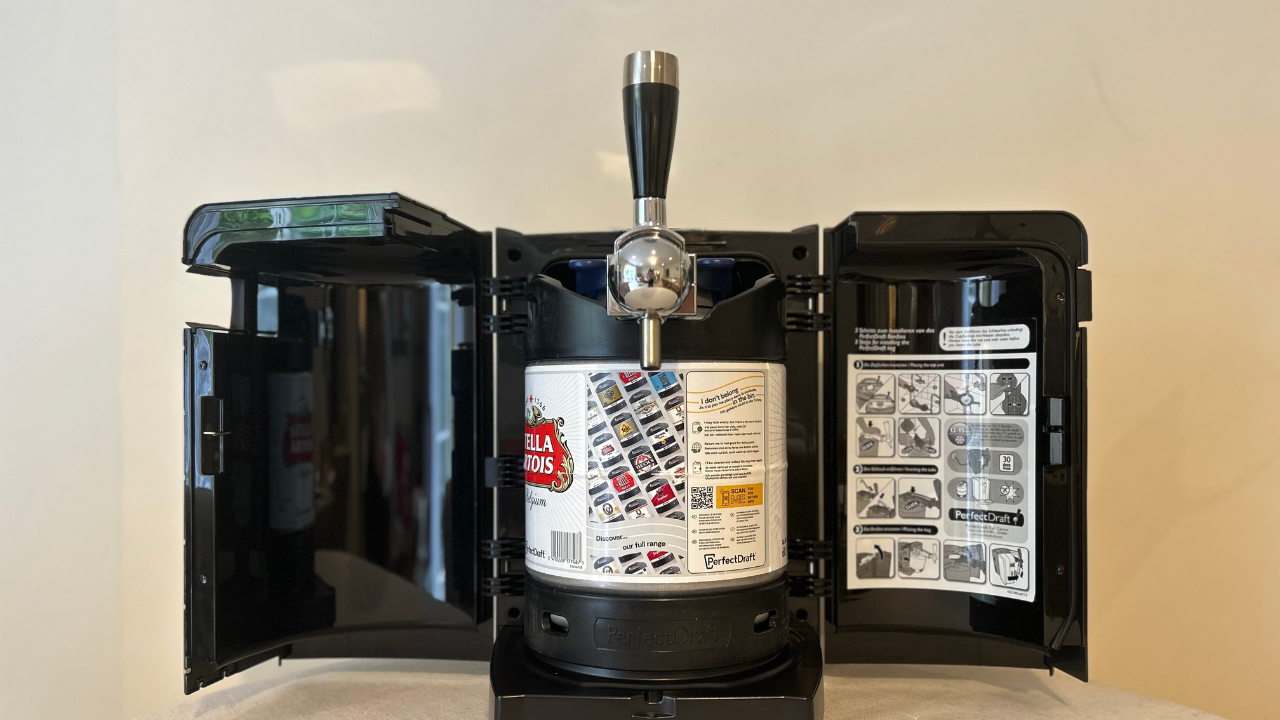
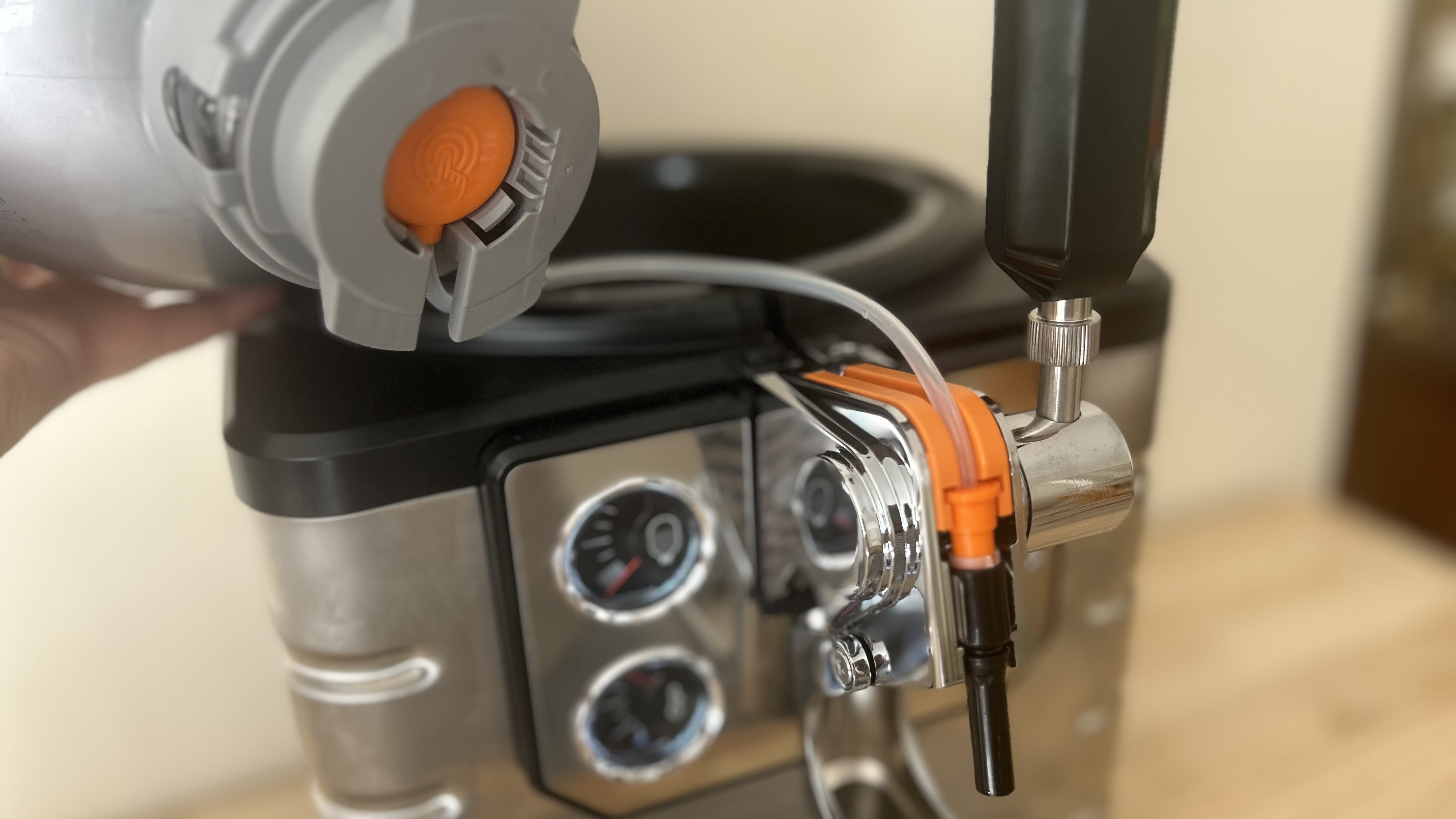
One thing to note is that the Blade is incredibly heavy – a lot heavier than the PerfectDraft. However, the Bade kegs are made from plastic, so they're a little easier to carry than the aluminium PerfectDraft ones.
Both of them have a similar cable length, but you will need an extension plug if you're wanting to use it outside.
Philips PerfectDraft vs Beerwulf Blade: design
When it comes to their design, both machines have an extremely different look. I'd say the PerfectDraft has a 'typical' appliance design that's nothing out of the ordinary. The keg is inserted within and an LCD screen displays the temperature, how much is left and beer's freshness. This is all you need to know really, so it's handy that everything is in the same place.
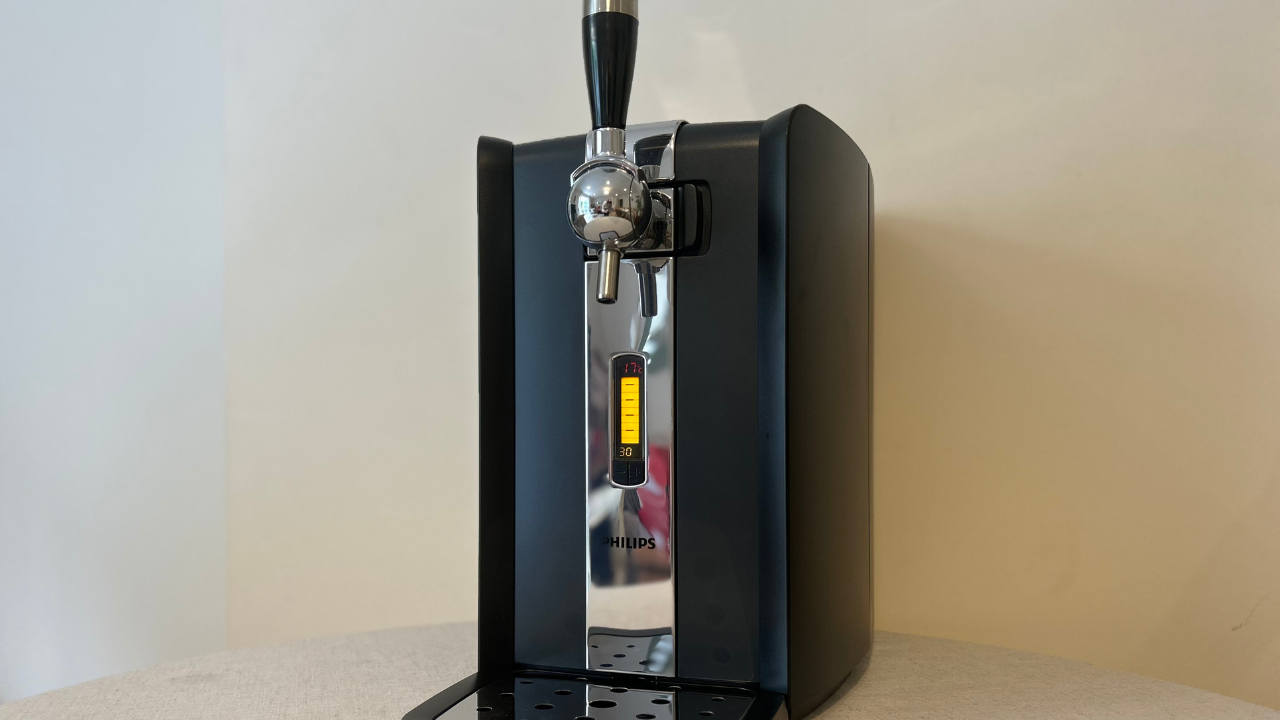
On the other hand, the Beerwulf Blade has a dome design that means you can see which keg is being used. I really like this and can imagine it would be handy for guests to see what's on offer during a party or barbecue. It also has the ability to light up which makes it look even better, especially if you're using it outside and the sun goes down.
There isn't an LCD screen, but the dials give it a retro feel and still display how much beer is left in the keg and what temperature it is.
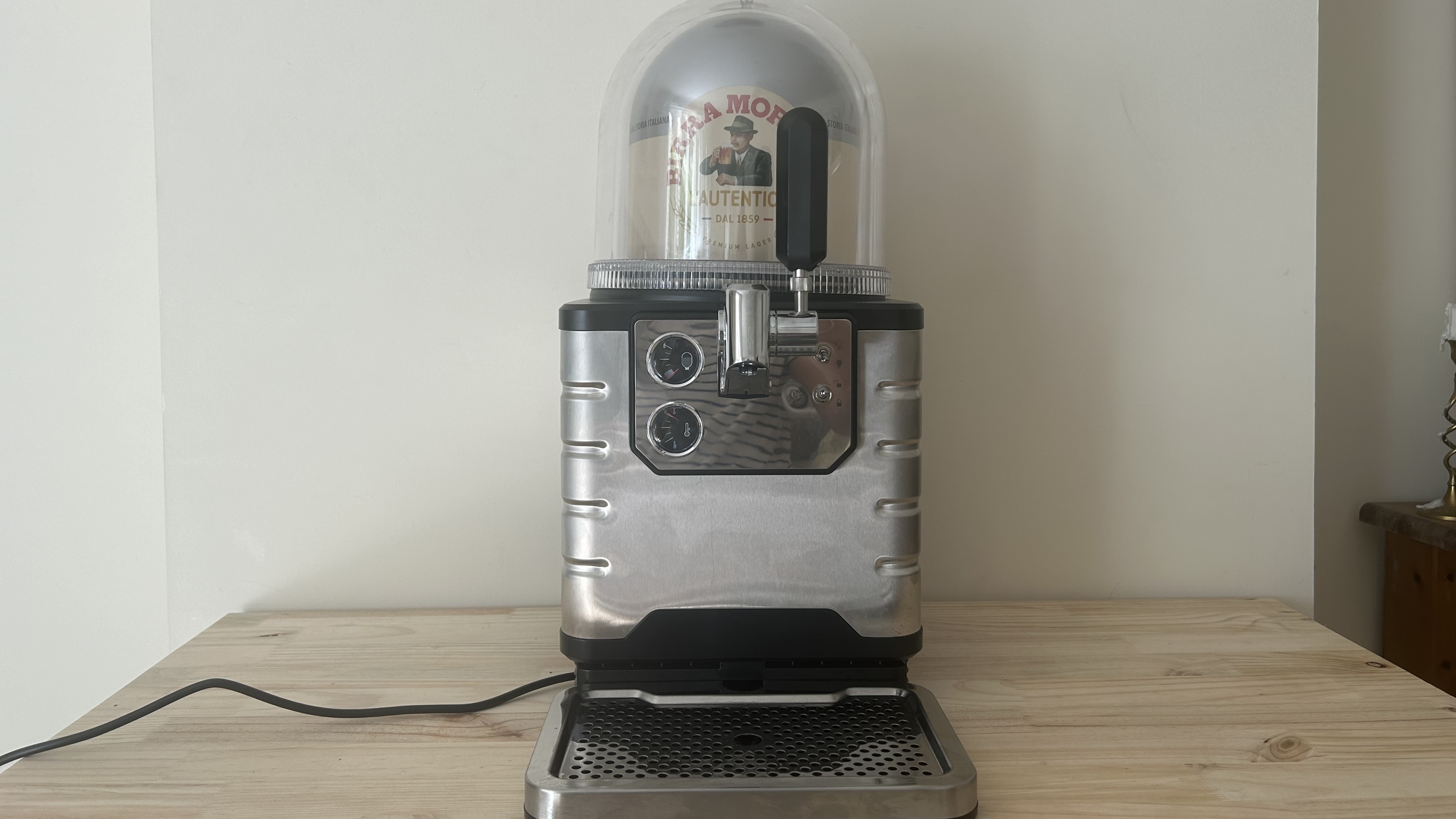
Philips PerfectDraft vs Beerwulf Blade: cooling time
One major difference is to do with each machines' cooling process. The Philips PerfectDraft takes around 12 hours to cool a keg at room temperature, but they can be pre-cooled in the refrigerator before being put on tap. When I tried this, I found it only took about three hours off the original time, so I was still waiting around eight or nine hours for the keg to be ready. I ended up just cooling it down the night before I was hosting, meaning it was ready to go the next day.
On the other hand, the Beerwulf Blade takes more than 24 hours to chill a keg at room temperature. Whilst the Blade does have the bigger keg, I was shocked at the cooling time difference between the two machines. However, stay with me for this next bit...
Unlike the PerfectDraft, if you cool a Blade keg in the fridge for around five to six hours before you want to use it, you can start serving right after placing the keg in the machine. I tried this the first time I used the Blade and it worked really well...much to my relief!
Therefore, if you have the fridge space and don't mind chilling a keg before using the machine, the Beerwulf Blade is the much more time efficient option.
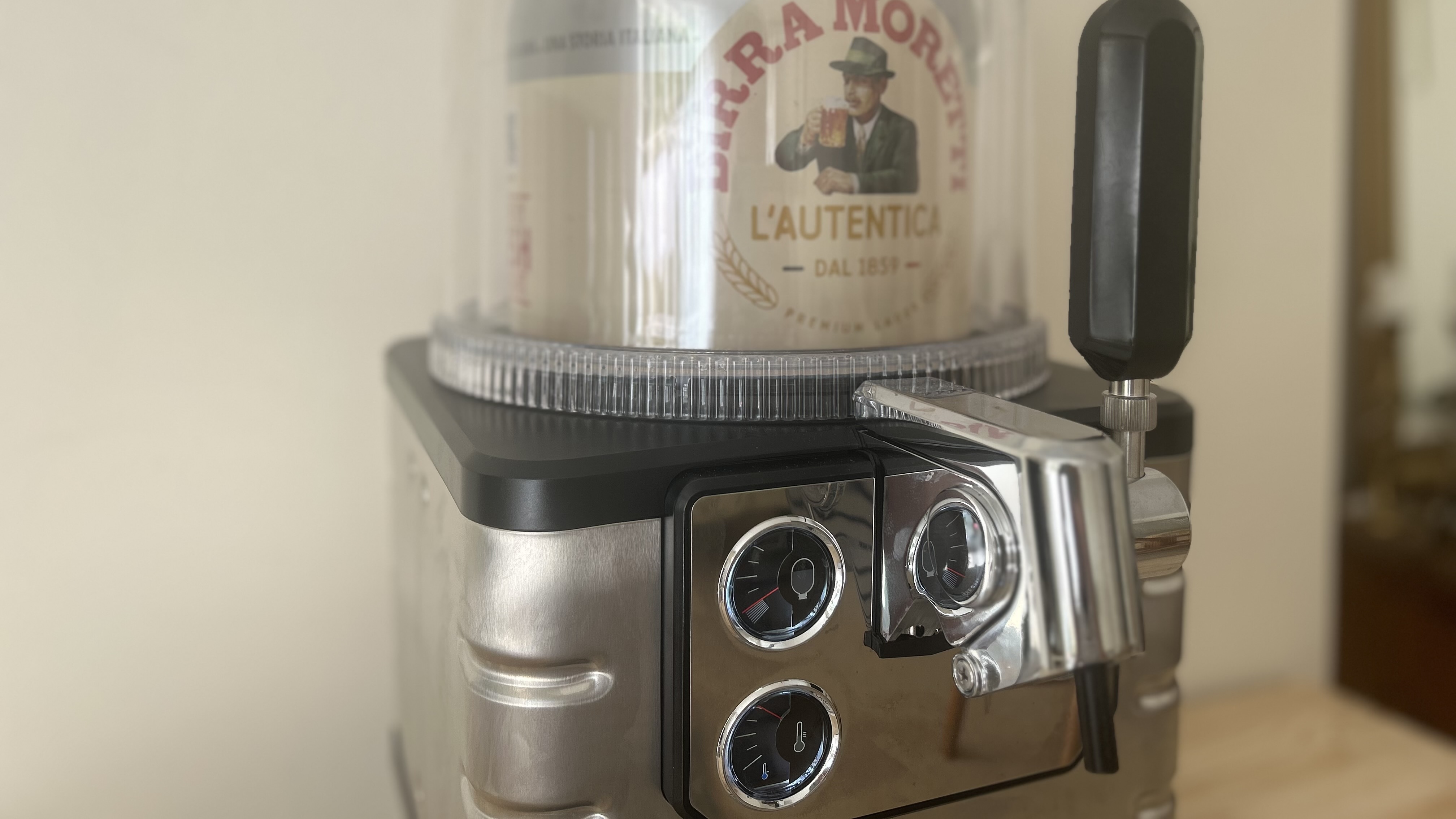
Philips PerfectDraft vs Beerwulf Blade: performance
I actually enjoyed using both the Philips PerfectDraft and Beerwulf Blade, and didn't find there to be too much of a difference performance wise. One thing I did notice was that once cooled, the Blade's first few pours were a lot foamier than the PerfectDraft machine. I wasn't entirely sure why this happened, and it could've been down to the different cooling times, but it soon sorted itself out after a few pints.
Having tested both machine on the same group of friends, it was also clear that the Blade was a lot more popular looks wise. They loved the dome look and I didn't have to constantly answer questions about which keg was on offer, so it was a win-win.
As mentioned in my Philips PerfectDraft review, a beer keg machine isn't the right appliance to buy for a party or large gathering. Whether you go for a machine that can hold a six litre or eight litre keg, they will run out after about 12-15 pints. However, they're ideal if you're hosting a small barbecue or drinks party, so this is something to bear in mind.
Philips PerfectDraft vs Beerwulf Blade: verdict
Overall, my favourite beer keg machine has to be the Beerwulf Blade. Whilst it's the more expensive option, there are a multitude of reasons why it's the better pick.
To begin, it looks and feels a lot more premium, and even offers a more upscale variety of beer kegs. I absolutely loved the dome and light-up design, and whilst there's nothing necessarily wrong with the PerfectDraft's look, the Blade is just a bit more exciting. It can also hold a bigger sized keg, and despite three and a half pints not being much of a difference, who wouldn't want a bit more booze?
Both machines have a similar set up process, but the cooling time is lot more appealing with the Blade. Whilst it takes longer than the PerfectDraft to cool down a room temperature keg, it can start pouring a five-hour fridge chilled keg right away. This means if you have the space, the Beerwulf Blade is a lot more time-efficient, but if using the fridge is out of the question, you're better off with the Philips PerfectDraft.
In conclusion, not only is the Beerwulf Blade the more premium option, its performance and cooling time make it even more impressive. Both machines are good (and quite similar) at what they do, but it's the Blade every time for me.
Feeling like making a beer-related purchase? Check out our Beerwulf discount codes before you do.







